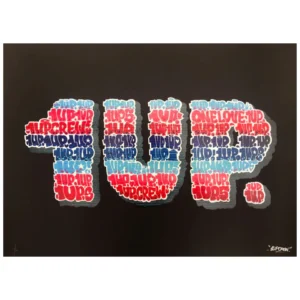In the ever-cyclical world of fashion, few brands have experienced the rise, fall, and rebirth quite like Coogi. Known for its vibrant colors and intricate knitwear patterns, Coogi became synonymous with the bold fashion choices of the 1990s, particularly within hip-hop culture. Its iconic sweaters, once donned by the legendary rapper Biggie Smalls, became more than just a piece of clothing—they evolved into a cultural statement, a symbol of the excess, creativity, and vibrancy that defined an era. However, like many trends, Coogi’s popularity waned as the new millennium approached, only to experience a remarkable resurgence in the 2000s. This revival was spearheaded by the brand’s Creative Director, Willie Esco, who recognized the unique legacy of Coogi and sought to reintroduce it to a new generation of fashion enthusiasts.
The Origins of Coogi: From Australia to the World
Founded in 1969 by Jacky Taranto in Australia, Coogi was initially conceived as a luxury knitwear brand. The company quickly became known for its extravagant and colorful patterns, which were inspired by the vibrant landscapes and natural beauty of Australia. The knitwear pieces were meticulously crafted, featuring intricate designs that set them apart from the more muted tones and simple patterns that dominated fashion at the time.
Coogi’s distinctive style appealed to a niche market, and for the first two decades of its existence, it remained relatively obscure outside of Australia. However, the brand’s fortunes began to change in the 1980s and 1990s when its bold aesthetic caught the attention of the American fashion scene. The extravagant sweaters, in particular, became a hit among celebrities and fashion-forward individuals who appreciated the uniqueness of the brand’s designs.
Coogi in the 1990s: The Hip-Hop Connection
The 1990s marked a pivotal moment for Coogi, as the brand became inextricably linked with hip-hop culture. This association was largely due to Christopher Wallace, better known as The Notorious B.I.G. or Biggie Smalls, who became one of Coogi’s most famous and influential proponents. Biggie’s love for Coogi sweaters was well-documented, with the rapper frequently wearing the brand in public appearances, music videos, and album covers. His endorsement of Coogi helped to catapult the brand into the mainstream, making its vibrant sweaters a symbol of luxury and status within the hip-hop community.
Biggie’s association with Coogi was more than just a fashion choice—it was a reflection of the cultural and social shifts occurring in the 1990s. As hip-hop grew from an underground movement into a global phenomenon, it brought with it a new set of values and aesthetics that celebrated authenticity, creativity, and, often, a rejection of traditional norms. Coogi’s bold, unapologetic designs resonated with this ethos, making it a natural fit for the hip-hop community.
The sweaters, with their kaleidoscope of colors and patterns, became synonymous with the excess and opulence that characterized the “bling” era of hip-hop. Wearing Coogi was a statement of individuality and success, a way for artists to showcase their unique style and assert their place in the industry. For many fans of hip-hop, owning a Coogi sweater became a way to connect with the culture and express their admiration for the genre’s pioneers.
The Decline of Coogi: Early 2000s and the Changing Fashion Landscape
Despite its strong association with hip-hop culture, Coogi’s popularity began to decline in the early 2000s. Several factors contributed to this downturn, including shifts in fashion trends and the emergence of new brands that captured the attention of young consumers. The minimalist aesthetic that began to dominate the fashion scene during this time was in stark contrast to Coogi’s maximalist approach, leading to a decrease in demand for the brand’s signature knitwear.
Additionally, the tragic death of The Notorious B.I.G. in 1997 marked the end of an era for Coogi. Without Biggie’s influence, the brand struggled to maintain its relevance within the rapidly changing landscape of hip-hop fashion. As new artists emerged and fashion trends evolved, Coogi found itself increasingly out of step with the tastes of the younger generation.
The early 2000s also saw the rise of fast fashion, which further complicated Coogi’s position in the market. Consumers were drawn to the affordability and accessibility of fast fashion brands, which offered trendy designs at a fraction of the cost of luxury items. Coogi’s intricate knitwear, with its labor-intensive production process, was not only expensive but also time-consuming to produce, making it less appealing to a market that was becoming increasingly focused on speed and convenience.
The Resurgence of Coogi: Willie Esco and the Rebirth of a Cultural Icon
While Coogi may have lost some of its momentum in the early 2000s, the brand’s story was far from over. Enter Willie Esco, a fashion designer and entrepreneur who was brought on as Coogi’s Creative Director. Esco, who had a deep appreciation for the brand’s history and its impact on hip-hop culture, recognized the potential for a Coogi comeback. He believed that the brand’s unique legacy could be leveraged to appeal to a new generation of consumers, particularly within the young men’s market.
Esco’s vision for Coogi’s resurgence was rooted in a careful balancing act: honoring the brand’s heritage while also updating its designs to align with contemporary fashion trends. He sought to reposition Coogi as a brand that could bridge the gap between vintage nostalgia and modern style, appealing to both longtime fans and new customers.
One of the key strategies behind Coogi’s comeback was a renewed focus on collaborations. By partnering with other brands and artists, Coogi was able to tap into different markets and reach a wider audience. These collaborations often played on the brand’s rich history, reimagining classic designs in fresh, innovative ways that resonated with contemporary consumers.
Esco also recognized the growing demand for vintage fashion, particularly among younger consumers who were seeking out unique, one-of-a-kind pieces with a story behind them. Coogi’s status as a cultural icon made it a perfect fit for this trend, and Esco leveraged the brand’s history to create a sense of exclusivity and authenticity that appealed to the vintage fashion market.
The Coogi Logo: A Consistent Marker of Authenticity
Throughout its various iterations and reboots, one element of Coogi’s identity has remained consistent: its iconic logo. Featuring a distinctive font and a kangaroo symbol, the Coogi logo has become a reliable marker for identifying vintage pieces. This consistency has played a crucial role in maintaining the brand’s legacy, as it provides a visual link between the Coogi of the past and the Coogi of today.
For many consumers, the Coogi logo represents more than just a brand—it’s a symbol of a cultural movement. It serves as a reminder of the brand’s deep roots in hip-hop culture and its connection to some of the most influential figures in music history. As Coogi continues to evolve, the logo remains a constant, ensuring that the brand’s heritage is never lost, even as it adapts to the changing fashion landscape.
Coogi Today: A Brand That Continues to Evolve
Today, Coogi stands as a testament to the enduring appeal of vintage fashion and the power of cultural nostalgia. Under Willie Esco’s leadership, the brand has successfully navigated the challenges of the modern fashion industry, staying true to its roots while also embracing new trends and opportunities.
Coogi’s recent collaborations have helped to keep the brand fresh and relevant, introducing its iconic designs to a new generation of consumers. These partnerships have ranged from capsule collections with high-end fashion houses to collaborations with streetwear brands, each one helping to cement Coogi’s place in the contemporary fashion landscape.
At the same time, the brand’s commitment to quality and craftsmanship remains unchanged. Coogi continues to produce its signature knitwear with the same attention to detail and artistry that has defined the brand since its inception. This dedication to maintaining the integrity of its products has ensured that Coogi remains a respected name in fashion, even as it evolves to meet the demands of the modern market.
The resurgence of Coogi is more than just a fashion story—it’s a reflection of the broader cultural trends that have shaped the past few decades. The brand’s ability to reinvent itself while staying true to its heritage speaks to the power of cultural icons and the ways in which they can be reclaimed and repurposed over time.
Coogi’s journey from a niche Australian brand to a global fashion powerhouse, its decline, and eventual comeback, serves as a reminder of the cyclical nature of fashion. Trends may come and go, but true cultural icons, like Coogi, have the ability to endure, adapting to the changing times while continuing to resonate with new generations.
As Coogi moves forward, it will undoubtedly continue to evolve, finding new ways to stay relevant in an ever-changing industry. But no matter how much the brand changes, its legacy as a symbol of cultural resilience and creative expression will remain firmly intact, ensuring that Coogi will always have a place in the world of fashion.
No comments yet.







